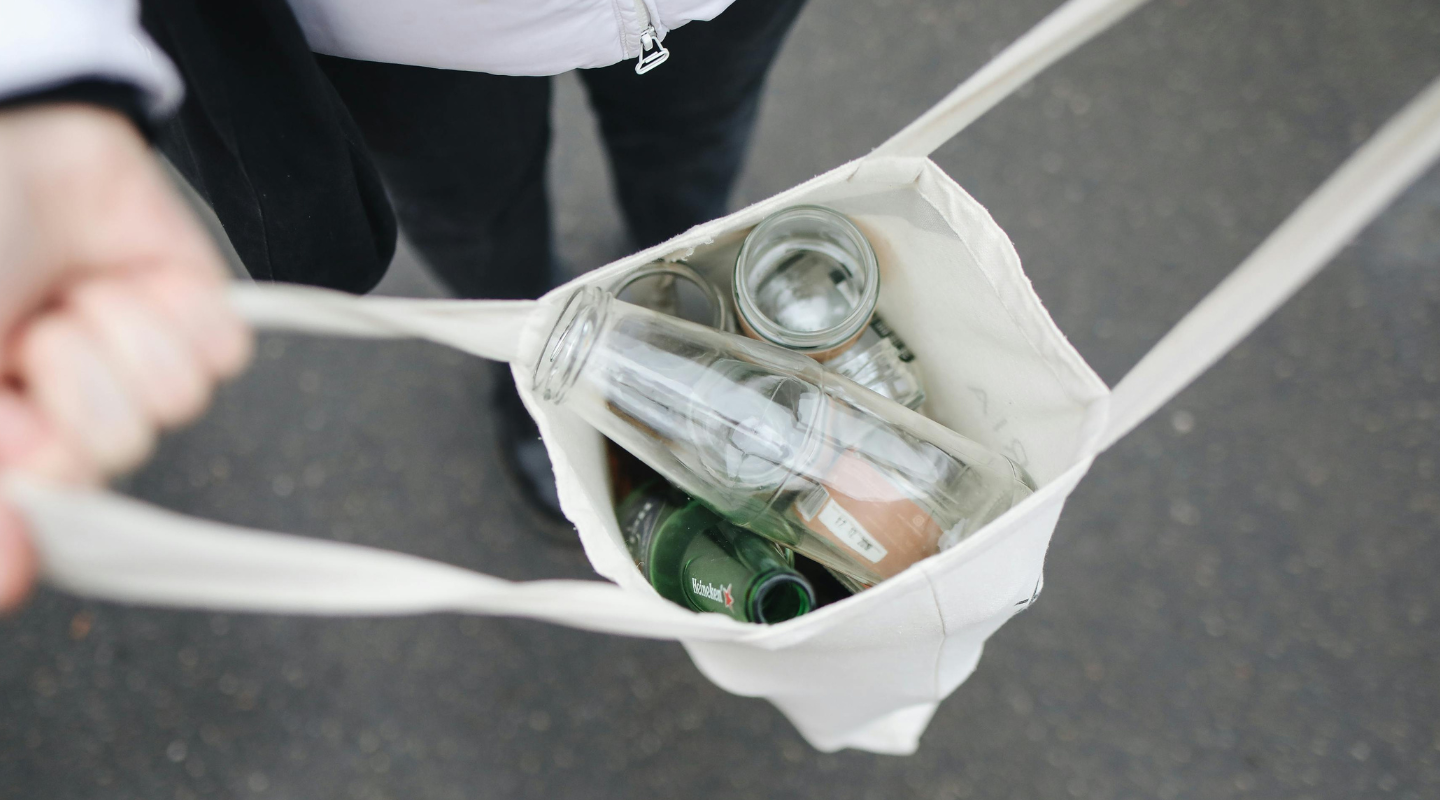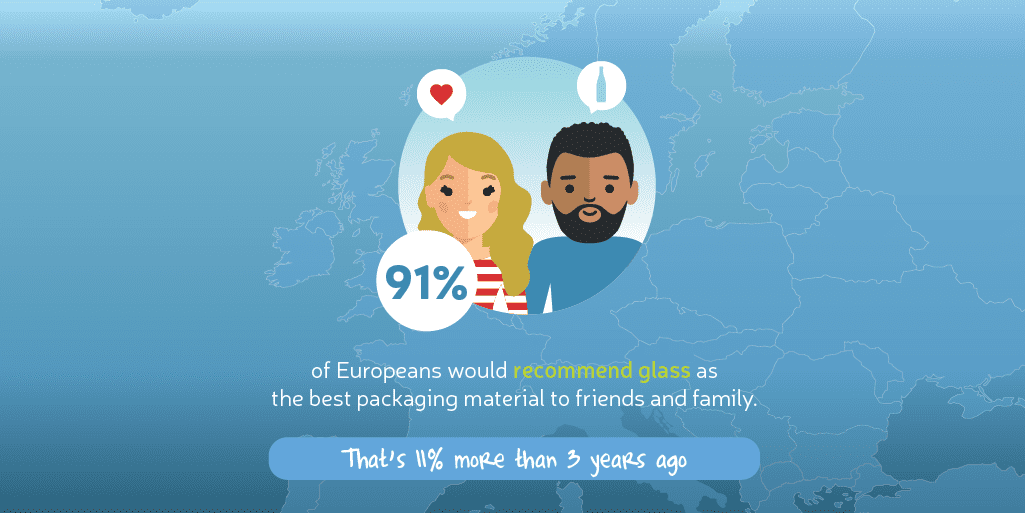And the good news is that these benefits are increasingly resonating with people like you, and driving more people to choose glass packaging than ever before!
A new consumer research survey released today reveals that glass packaging is the top choice for environmentally conscious consumers, with many people choosing glass specifically because of how recyclable it is. 9 in 10 people would recommend glass as the best packaging material to friends and family, with glass consistently coming out on top as the most environmentally-friendly form of packaging – particularly when it comes to avoiding food littering, avoiding packaging waste and addressing climate change. The findings also reveal that the vast majority of people are recycling their glass packaging: 84% of respondents state that they collect their glass separately for recycling, with 8 in 10 correctly disposing of caps and lids separately. Taking used glass to a local bottle bank is considered the most convenient disposal method across Europe.
That’s great news, but there’s always room for improvement. So let’s dive in: how does glass recycling work and why does it matter?
Once your used glass is collected, it’s broken up into ‘cullet’ and melted down. This melted glass is used to replace other raw ingredients, reducing waste and energy use and cutting CO2 emissions! And better yet, glass never loses its quality, so it can safely be recycled again and again. This means your used glass becomes a vital resource for producing your next bottle or jar – and if it keeps being recycled, it stays in the production loop endlessly. Currently, 76% of glass is collected for recycling in the EU. At Friends of Glass, we want to increase the glass collection rate even further, to 90% by 2030, so that no glass is wasted and every last bottle helps to create the next one.
So how can you raise your recycling game?
♻️ Rinse your used glass – liquids and food remnants can interfere with the recycling process, so make sure your glass is clean and dry before recycling it
♻️ Separate lids and corks from jars and bottles (you can compost used corks to make sure these don’t go to waste either!)
♻️ If your country collects different colours of glass separately (green/amber/clear), make sure to separate your glass accordingly
♻️ Check online to see what types of glass you can and can’t recycle in your local collection. Here’s a list of the most common collection types:
✅ Recyclable
Bottles of any colour. Jars of any colour.
Non-food bottles known as flacons (e.g. aftershave and perfume, or pharmaceutical packaging)
❌ Not recyclable
Glass cookware (e.g. Pyrex). Microwave plates. Crystal glass. Drinking glasses. Vases. Light bulbs. Window glass.
Why can’t I recycle all of these types of glass together?
Some types of glass can contain contaminants that should not end up in the glass container loop, as they would spoil the glass quality, while other glass articles may be treated and have a higher melting point than glass bottles (like cookware). This means that it won’t melt at the same time as untreated glass when processed for recycling. You may be able to recycle treated glass elsewhere if your local authority or municipality provides such services, but it shouldn’t be included in your ordinary glass recycling. Check online to find out more about your area!







